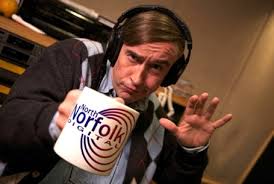…But you can’t make it drink. Thing is: what happens if the horse doesn’t know it’s thirsty?
I’ve always had a strange relationship with this quote. With no rational reason why – from the first time I heard it, I’ve always thought: What if the horse is so deliriously dehydrated it doesn’t know it needs water?
Of course, no longer having the imagination of an eight year old (leave it), I know that’s a ridiculous statement to make. Well, it was – until I fielded a valuable question from one of our sales staff about discussing running meetings with clients over our MeetTheBoss video platform: “What if the client doesn’t want to meet with us over video?”
Very valid point – especially when we’re talking about clients we’ve been working with for years. Why would they want to change the way they’ve been working with us? Why schedule time for a video call when a phone call has sufficed in the past? Why would they now want to meet the rest of the team working on their campaign?
Well, just like the dehydrated horse (disclaimer: our client’s aren’t dehydrated horses), the answer sits at the centre of the entire client relationship management movement for GDS: it’s all about getting our clients to buy in to the reasons why we’re asking them to work with us this way. Without it, there’s absolutely no way we can work towards the exceptional.
Or, to put it another way: we need to make them feel the thirst.
For GDS, that means being approachable in the way we explain how our video platform functions; the simplicity in joining from any device and the ease at which we can introduce entire teams to one another. It means unveiling the intentions at hand for doing so – namely, to ensure the best possible results for a client’s campaign above and beyond mere box ticking – putting us in a position to be as close to the client as possible, without suffocating the experience.
But in order to do so, we need to ensure due diligence our end. We need to be able to guarantee full and absolute technical support (with our exceptional, always-on technical team that won’t be a problem) to induce the smoothest of processes. We need to be able to secure times and dates – and know they’ll be kept to. We need to build trust with our clients that what we’re doing is for the greater good.
But most importantly: we need the process to work to allow us to set, manage and monitor expectations with our clients. We’re here to be held to them in their entirety.
How we do that is wrapped up nicely in next week’s blog, live and direct from Miami….








